3-Way Low Profile CPU Cooling Shoot-Out: Reeven, Phanteks, & Noctua
by E. Fylladitakis on January 18, 2017 8:00 AM EST- Posted in
- Cases/Cooling/PSUs
- Noctua
- Phanteks
- Cooler
- Reeven
The Phanteks PH-TC12LS
We received the Phanteks TC12LS inside a dark cardboard box with an abstract aesthetic theme, mostly based on schematic drawings of the cooler itself. Considering the size of the cooler, the box is large, with excessive layers of polystyrene foam for protection found on the inside. Inside the box we found four manuals, one for each of the most popular languages in the regions that the cooler is being marketed into, the necessary mounting hardware, and a syringe with Phanteks PH-NDC thermal compound that should last for at least three or four applications.
The Phanteks TC12LS features a narrow, dense array of black aluminum fins, much like the one we saw on Steropes, yet is even smaller. The fins are relatively thin but strong, with their sides rolled so that they support each other, virtually amassing together into a single strong construct. There are small gaps towards the center of the array to allow for a screwdriver to go through for the installation of the cooler, further reducing the surface of the array. Again, the TC12LS is wider than the CPU socket area of small motherboards, but the fin array is high enough to allow for the installation of standard height RAM modules beneath it.
A major marketing point of the TC12LS is its fan. Phanteks is using a full size 120 mm fan, and not just any 120 mm fan, but the PH-F120MP, one of their more advanced high performance designs. The PH-F120MP is a high static pressure design that may be quite a bit of an overkill for the narrow heatsink of the TC12LS, but should maintain good performance at lower RPMs.
Six 6 mm thick nickel-plated copper heatpipes exit the small base of the TC12LS, entering the fin array from one side. Rounded metallic caps cover their endings, mostly for aesthetic purposes.
The base of the TC12LS is not solid. A close inspection reveals that it comprises of two parts, the copper base and an aluminum top, with the heatpipes sandwiched between them. The aluminum top is flat and only meant to offer mechanical cohesion and mounting functionality, not to directly aid the thermal performance of the cooler in the slightest. The contact surface is machined well, down to a very smooth, flawless surface.


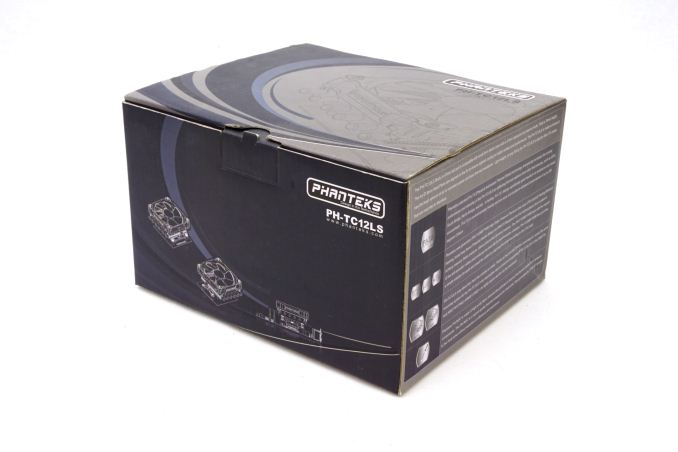
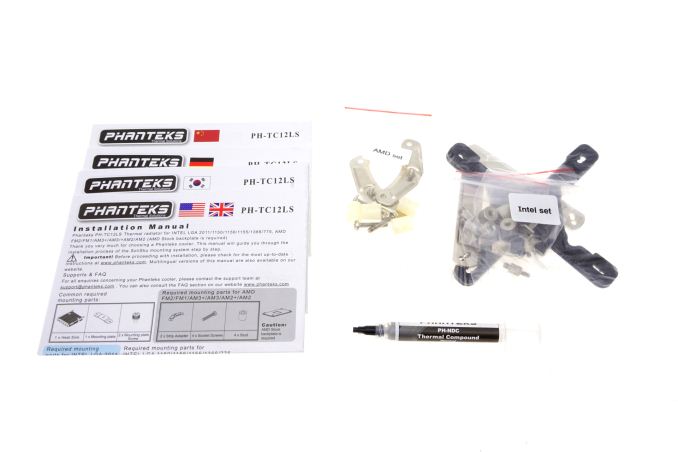

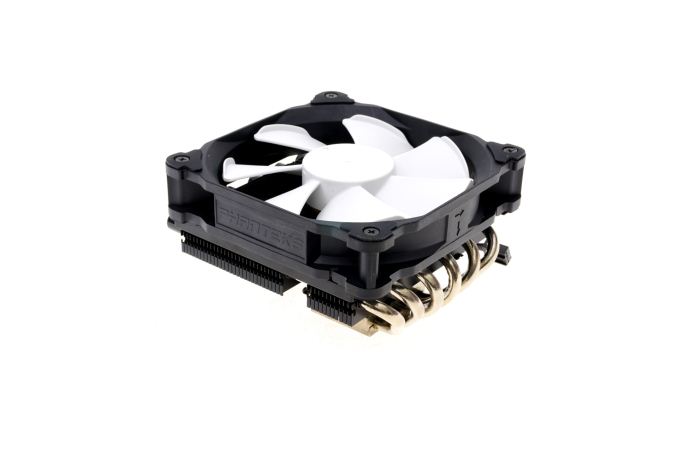
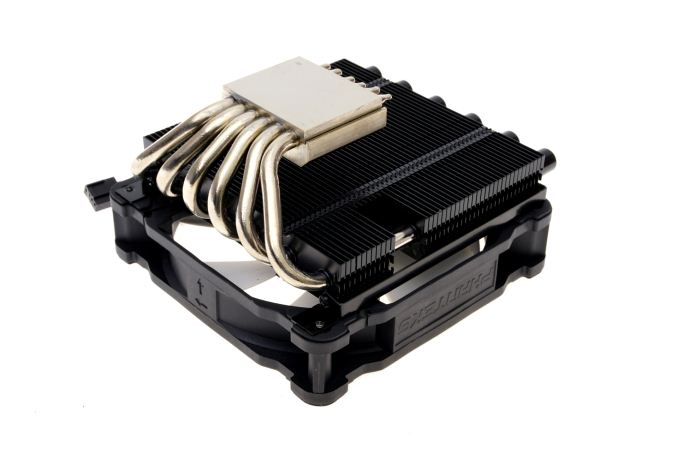
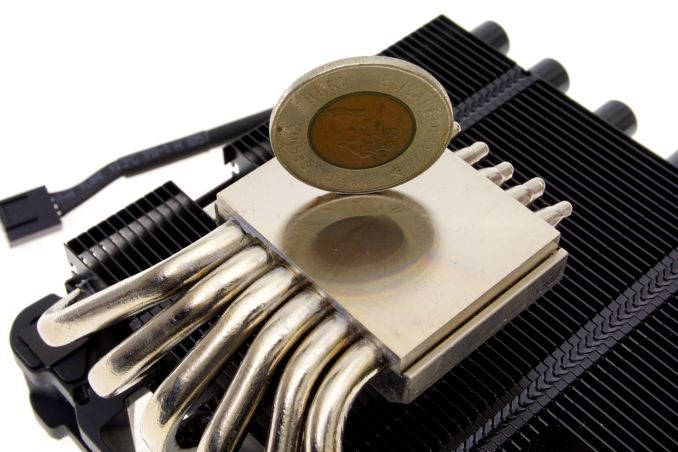








43 Comments
View All Comments
nafs_asp - Tuesday, January 24, 2017 - link
Big Shuriken is probably the best you can cram into a Node 202. I have a 6600k at 4.5GHz in mine, and the Big Shuriken keeps it under 70C during x264 and Aida64.Brainonska511 - Tuesday, January 24, 2017 - link
I have a Cryorig C7 in my mITX system on a regular i5-6600. I could have gone with something taller, as there is room my Corsair 250D, but what was really appealing to me is the fact that the C7 fits completely within the socket area. Some mITX boards are pretty packed and some users reported that other, larger horizontal coolers could block the PCI-E slot or hit other components on the board.creed3020 - Thursday, January 19, 2017 - link
Look no further than a Cryorig C1, it needs 74mm of clearance so see what you can do with your case options. I have one and it works wonders on an overlocked Intel Core i5-4690K @ 4GHz inside a Silverstone RVZ-01B.YukaKun - Wednesday, January 18, 2017 - link
How does the "The Reeven Steropes RC-1206b" stack to the "CM GeminII M4"?They look very similar and the M4 does quite a good job with my old A8-3500 inside a Thermaltake SD200.
Cheers!
creed3020 - Thursday, January 19, 2017 - link
Be very wary of the Cooler Master GeminII M4 as its base has poor CPU contact. The base is not flat and just has the heat pipes squished and exposed to the CPU leaving air gaps between the CPU heatspreader and heatsink base. I know this because I recently bought one for an HTPC with an AMD APU and haven't been very impressed with that aspect. The thermal performance is better than the stock heatsink and acoustics are excellent but the product is not as well engineered as it could be for $45.YukaKun - Friday, January 20, 2017 - link
That is kind of why I am asking. Although I have no complaints on how it's performing, I'd like to know if I should keep it or consider a newer/different HSF for my upgrade.Thanks for the input as well :D
Cheers!
LiviuTM - Wednesday, January 18, 2017 - link
It's Celsius.80-wattHamster - Wednesday, January 18, 2017 - link
Not the subject of this article, but what stands out to me is the performance of AMD's Wraith. It's so close to the 212 EVO in every metric (except fan speed) that one can't help but conclude that AMD used the EVO as its benchmark during development. And very nearly hit it. On a bundled cooler.wolfemane - Wednesday, January 18, 2017 - link
You really should have included the Scythe BIG Shuriken 2 Rev. B cooler to your group as it's also a horizontal cooler. The company claims a max TDP of 130w on 115x CPUs. Noctua only claims 95w max TDP on 115x CPUs for the Noctua NH-C14S. Would have been nice to see how this compares.Spunjji - Wednesday, January 18, 2017 - link
Based on my experience (quietly cooling an i5-2300 in an extremely small HTPC case barely bigger than the ITX board dimensions) it would clobber all of these except for the Noctua, and it will fit where the Noctua will not.